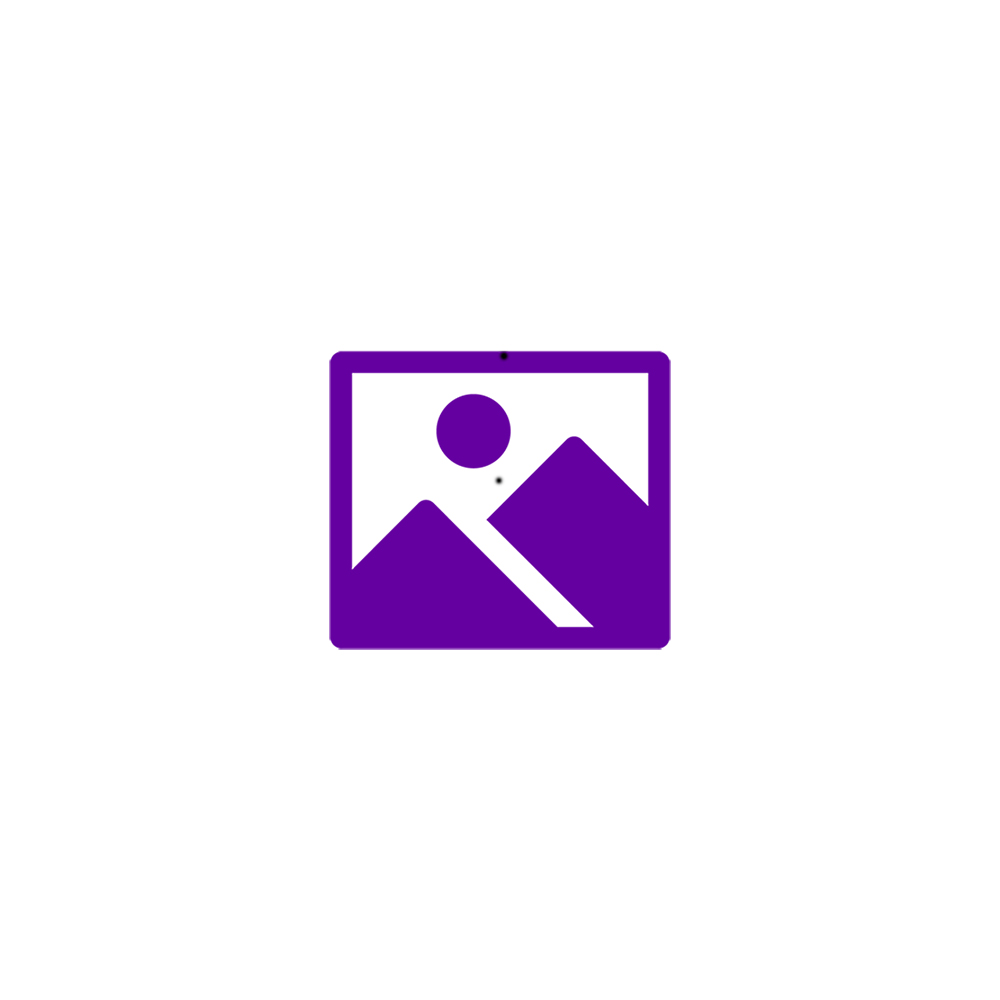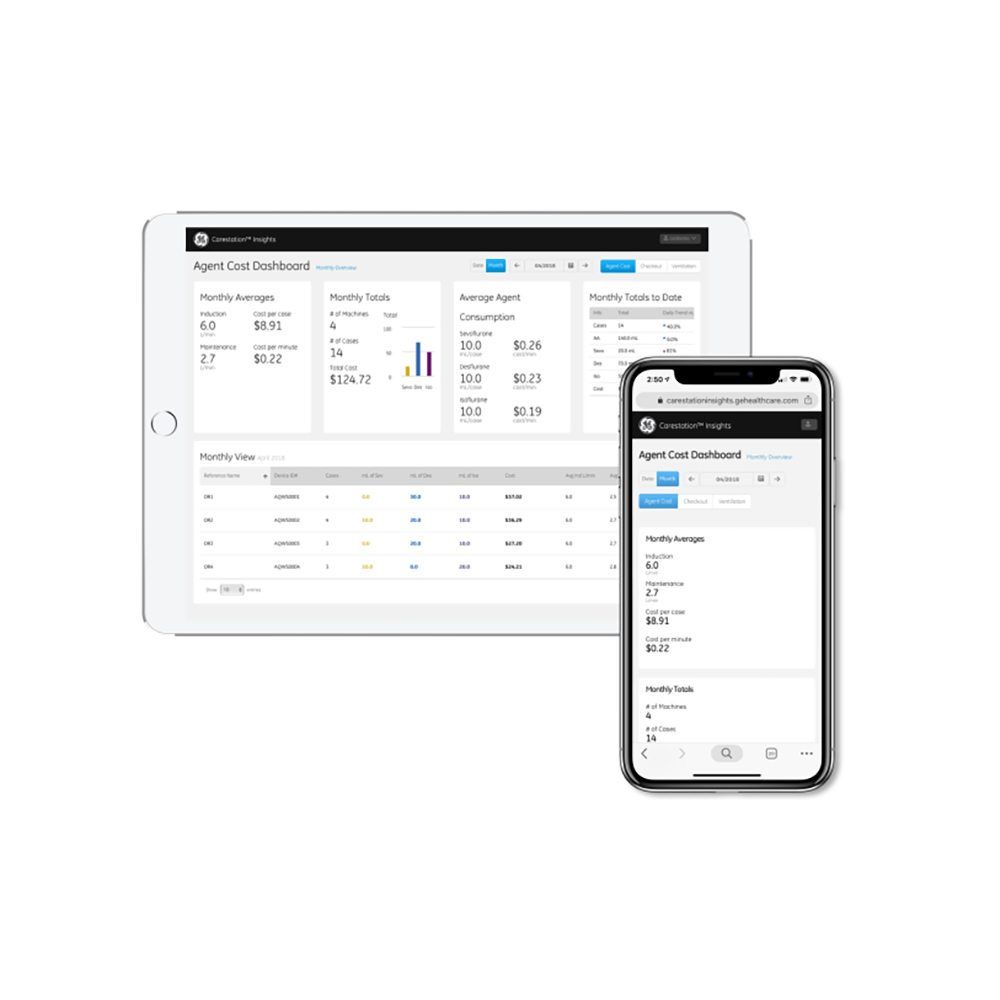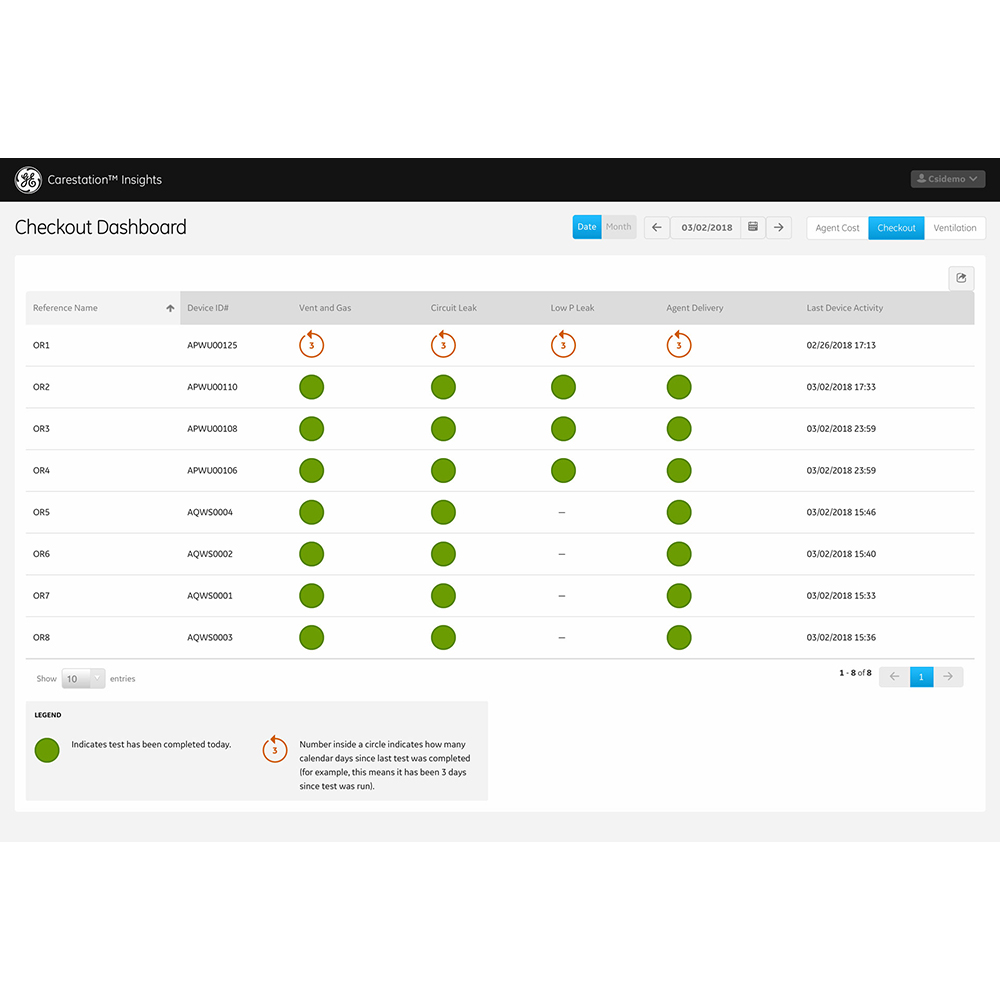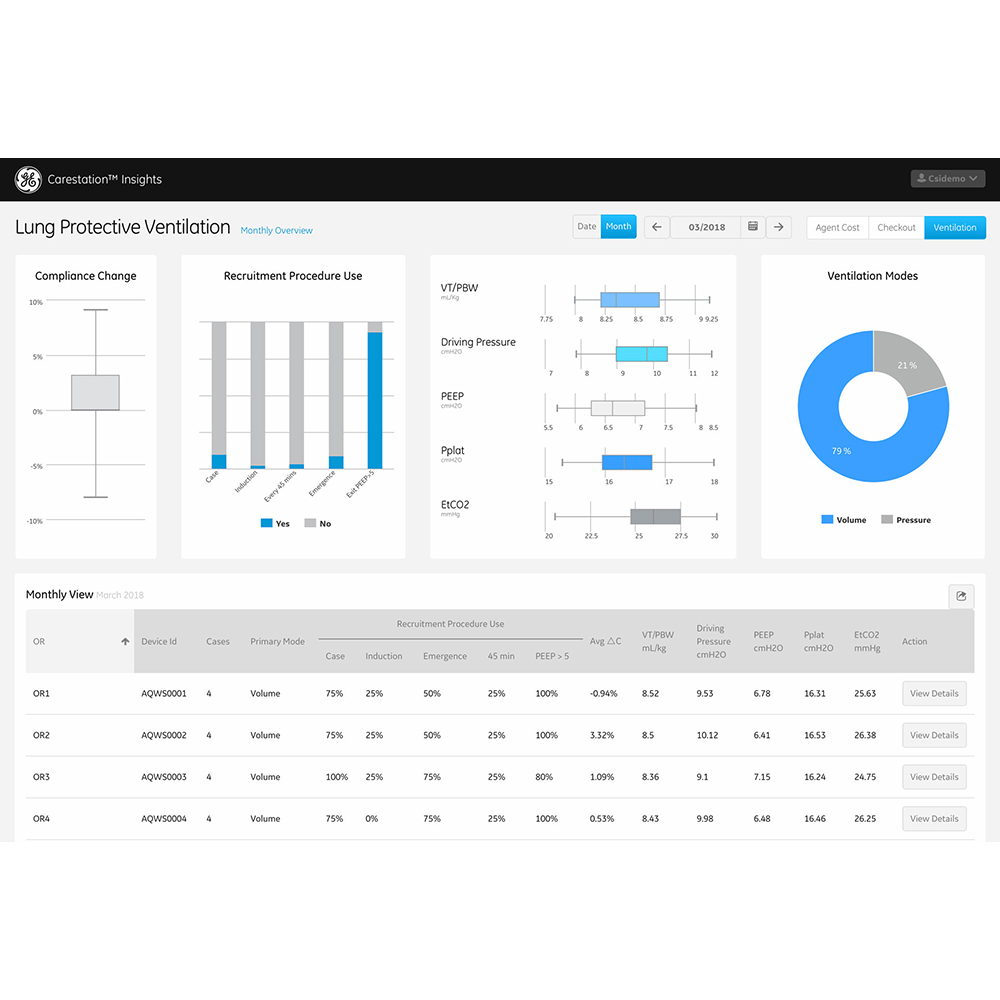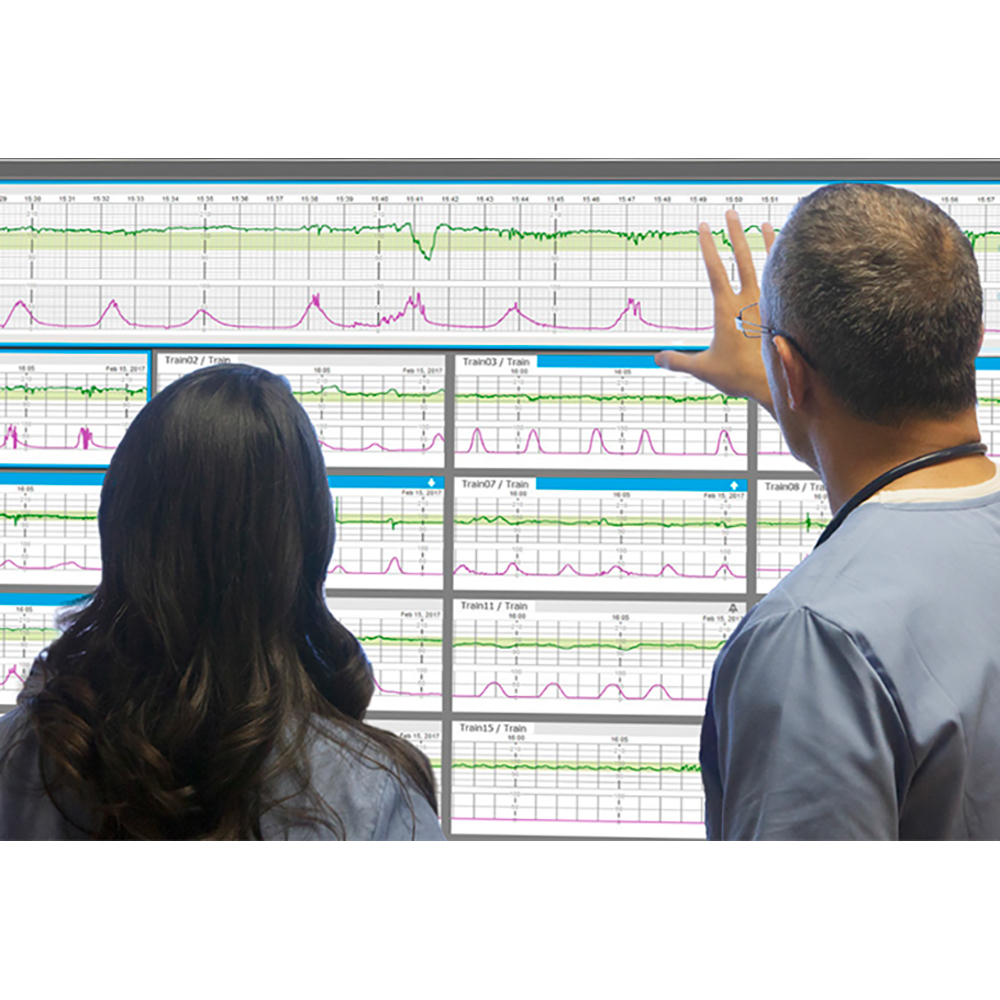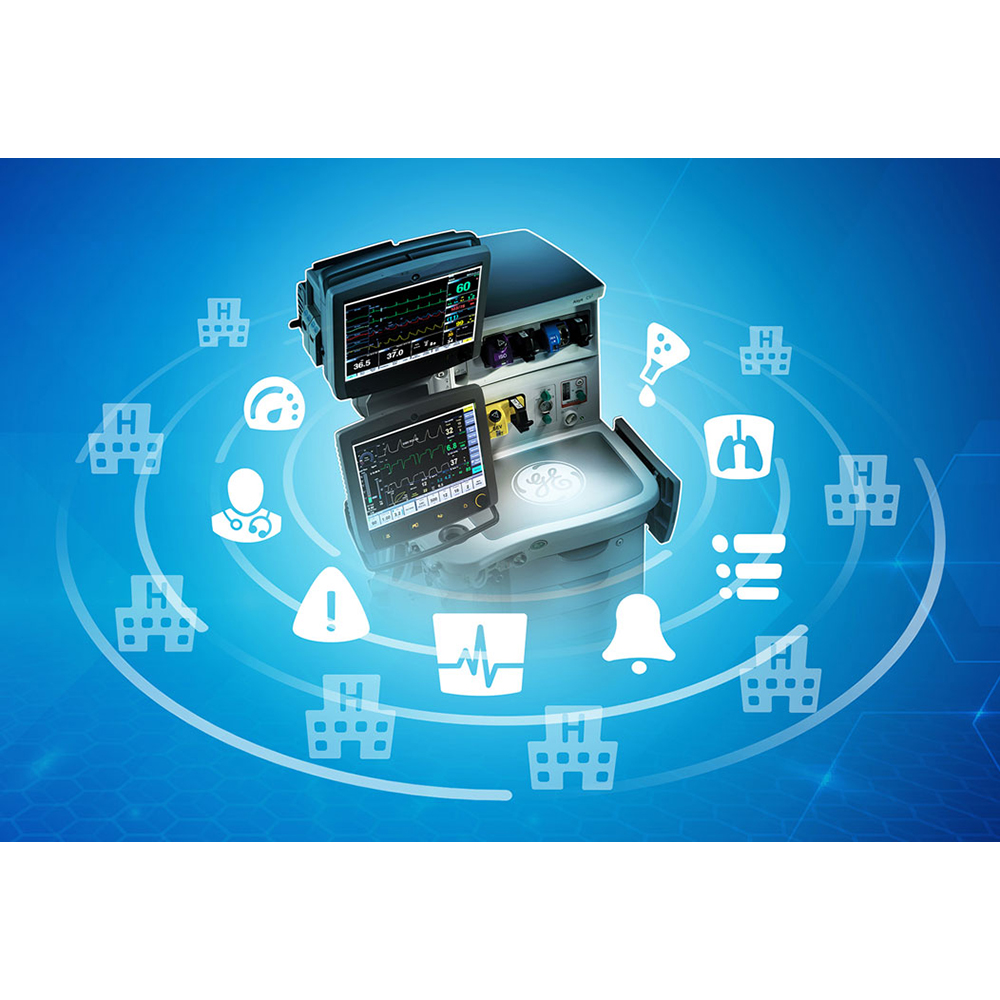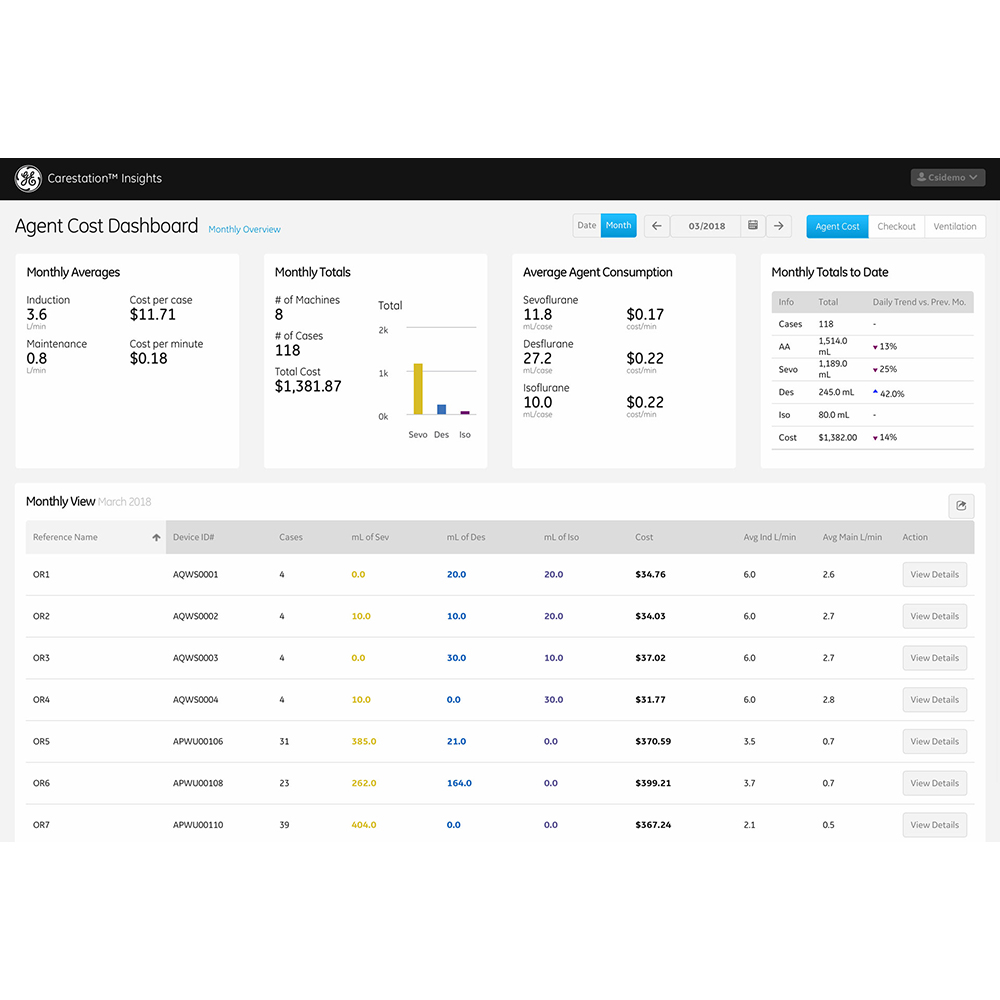
Carestation Insights - Agent Cost
Carestation Insights Agent Cost application helps you to drive low flow anesthesia strategies that can reduce agent waste in the OR, resulting in both cost savings and reduction in your environmental impact.
| SW1785CI | |
| Applications | |
| Anesthesia | |
| Other | |
| GE HealthCare | |
Enter your approval number and submit to add item(s) to cart.
Please enter approval number
OR
Don't know your approval number? Call 800-437-1171
Enter opt 1 for the first three prompts, and have your System ID available.
If you add item(s) to cart and submit your order without the
approval number, GE will contact you before your order
can be confirmed for shipment.
Select your approver's name and submit to add item(s) to your cart
Please Select Approver Name
OR
Don't know your approval number? Call 800-437-1171
Enter opt 1 for the first three prompts, and have your System ID available.
If you add item(s) to cart and submit your order without
selecting an approver, GE will contact you before your order
can be confirmed for shipment.
Features
- Visibility into low flow strategy adoption
- Fresh gas flow rates across department
- Automatic case detection to find outliers on case by case basis
- Phase detection algorithm determines induction vs maintenance flows
Product Overview
Anesthetic agents are the biggest ongoing expense associated with anesthesia units. Hospitals can be spending an extra 30-40% for anesthetic agent than what is needed due to how the machines are being used &ndash ; driving up expenses and impacting the environment1. A strategy that can help is low flow anesthesia. Using low fresh gas flows reduces anesthetic agent waste, minimizing both costs and environmental impact. In fact, one institution saved $350k/year by implementing a low flow strategy2 .
To help you implement a low flow strategy, the Carestation Insights Agent Cost application gives you visibility to fresh gas flows across the entire department. In addition, the Aisys CS2 anesthesia machine offers advanced tools to assist the provider in using low flows at the bedside. This combination provides the right recipe to drive change.
You need the right information in order to target the best opportunities to improve. This requires a deep understanding of the workflow. In anesthesia, higher flows are generally used at the beginning of the case, or during induction, and for good reason. When the maintenance phase of anesthesia begins, flows are lowered. The analytic must account for this &ndash ; and it must be automatic. Adding any additional manual steps or relying on manual recording will be a barrier for adoption of any new strategy. Carestation Insights accounts for this with advanced algorithms and visualizations.
The Agent Cost application provides feedback for every case, and aggregates for the whole department, for the fresh gas flows used in both the induction and maintenance phase of anesthesia. Leveraging the breath-to-breath high fidelity data output of the Aisys CS2 anesthesia machines, the anesthesia phases are determined algorithmically based on the clinician&rsquo ; s interactions with the machine. Using this, a hospital can see how they are performing, find outliers, and drive change to low flows while respecting the required workflows.
Carestation Insights makes the actionable insights available, but how do you use it to actually improve? To test this, we worked with one of the lowest flow institutions in the world. We thought if we can help to lower flows there, then it is possible anywhere. Sure enough, the baseline showed that the institution was indeed using low flows relative to others, but with the visualization and constant monitoring they found opportunities for improvements.
Ensuring visibility for all, the team got together to talk about the importance of the opportunities that were available, and what the clinician could look for to improve. They were able to improve even further, cutting use (and therefore cost and environmental impact) by an additional 12% -- achieving aggregated time weighted fresh gas flows of less than 0.75 l/min. Ask any anesthetist and they&rsquo ; ll tell you that is exceptional. The automated interpretation and display of the insights allowed specific educational interventions to drive the improvements in this case. In fact, the site focused most on the induction phase, since even though it was a much shorter part of the case relative to maintenance, much of the anesthetic agent used during the whole case is used during this period. Focusing here they were able to implement change &ndash ; using actionable insights to drive improved outcomes.
References:
1. Estimates derived from GE&rsquo ; s HealthCare ecoFlow Calculator https://geHealthCare-amer.my.salesforce.com/sfc/#version?selectedDocumentId=069a0000004eOn7
2. Ochsner Installs Patient-focused, Environmentally-friendly Anesthesia Technology (2016). https://news.ochsner.org/news-releases/ochsner-installs-patient-focused-environmentally-friendly-anesthesia-techno
Additional Features
- Provides usage of each anesthetic agent
- Agent costs across cases, ORs, and departments
Compatible Products
